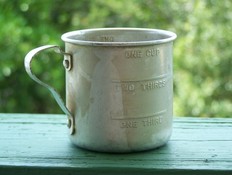 The Washington Post puts on the Style Invitational -- a weekly contest involving words. It's a word-nerd favorite. The classic example: change a single letter in an existing word to create a useful new word, such as "reintarnation." Reintarnation = when you die and come back as a hillbilly. I'm a little stung that some of my better entries haven't won. For instance, in "Children's Books that Will Never Get Published Contest" I'm still sold on Bi-Curious George. My Pop/Poet mash-up of T.S. "Misdemeanor" Eliot ("Ash Wednesday" + "Move It") should have earned me at least a Style Invitational Loser coffee-cup, but no. My genius continues unrecognized. 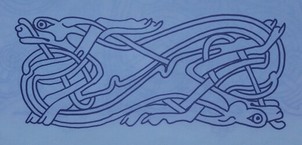 I woke in a Style Invitational mood, pondering the words latitude and altitude. High altitude. Changes in latitude. They sort of mean the same thing, these twin words -- a measure of some degree of distance from a set point -- even though one derives from alto (height) and the other latus (width). And there's attitude, originally referring to posture but which came from "aptitude" and the Latin "aptus" meaning "joined, fitted." Not needing much encouragement to chase a dovetail, I am led to other twin words that might be coined. If the twin word is a partial anagram, well, Attitude's brother is obvious -- someone has employed it, surely, to describe the quality of being both inked and snotty: Tatitude. But how about Craftitude and Fractitude, which share only a 21st Century millieu?
While Halitude and Ahlitude have an obvious onomatopeoic connection:
With useful applications in my own daily life, Faltitude and Alfatude:
Full of judgement about other people's ideologies? Try Galtitude and Gallitude:
Once this sort of thing starts, it's hard to stop: Waltitude and Awltitude:
I slay myself.
Okay, fine. That may very well be a message from the subconscious that it's time to put away the toys and think about something marginally more useful. Wait. One more. Aglatude = offers a quantitative ranking of all your moods. The ideal score is 42. (Thank you Douglas Adams.)
4 Comments
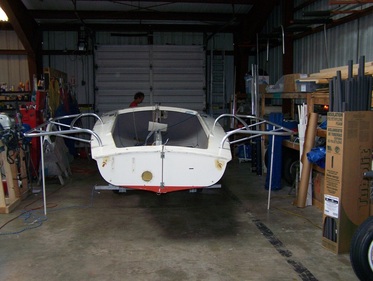 Frankenscot -- our planned entry for the 2014 Everglades Challenge race -- continues to emerge from the primordial ooze. Aside from the occasional brainstorming session at a local watering hole, this boat-building project has been taking place in the back yard. Our boat-yard, as it were. But when the Frankenscot needed to go visit the machine shop, Captain TwoBeers had to call in the troops. The Frankenscot trailer (Frankenwagon?) had a tenuous grasp of itself. By all estimates, it only had a few nail-biting miles left before imploding in a puff of rust-flakes, leaving the Frankenscot stranded road-side. A three-card Monte shuffle ensued, involving several cars and some very good friends. The Fisher-Silvernail Flying Scot and Ensign RumDown's (spoken with a note of panic, mind you) powerboat trailer and the Frankenwagon all played a sort of musical chairs game. But at the end of the long day, no one was bleeding, nothing sank, and the Frankenscot was sitting pretty on a good trailer at the machine shop. Sailing friend and metal maestro Derek Dudinsky has fabricated all sorts of odd bits and bobs out of aluminum and stainless for us over the years. Stanchions and chain-plates, centerboard control-boxs, a cooking-pan rack for the kitchen, cool trophies, a deluxe retractible pole for the birdhouse, miscellaneous things that have made Customs officers scratch their heads all over the Caribbean. He's got a big shop, JTR Enterprises, with all the metal-bending fixin's in Gulfport, FL. He hosted a Classic Moth Midwinters party at the shop one time: the science-crazy Moth-building enginerds still speak of the place in hushed and sentimental tones. For the Frankenscot, we asked Derek to bend some aluminum tubing into hiking racks. By attaching these hiking racks, ideally, we will be able to sail pretty comfortably while keeping the boat "hiked down."
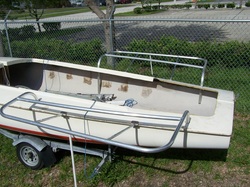 The Frankenscot racks (shown in place but not yet nailed in) might look a little like the wayward child of a brushed metal safety-rail and a sturdy awning frame, but they make the boat a whopping ten feet and eleven inches wide. Next up, the fittings that will hold the racks firmly in place. 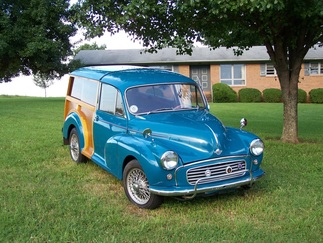 In which we put key to ignition and send ourselves back down the road. As so often happens on these sailing adventures, we leave town without having learned much about the host location. Mooresville, NC bills itself as Motor City, USA, and it's firmly in NASCAR territory. Regardless our preoccupation with wind, we observed a lot of car-pride in these red-dirt hills. While buzzing around town at the start of the week, looking for a spot to park our rig, we saw a Morris Minor sunning itself beside the road. A Morris Minor Traveller. In Victoria Blue -- a color I remember vividly because in his last couple of years, my Daddo couldn't stop looking for it in every Krylon and Rust-Oleum display we passed. It was, he told me, a blue somewhere between dark-sky-blue and French cadet blue. An elusive shade we eventually decided to special-order for his restoration project of an armful of Morris Minor Traveller parts. Daddo had admired these quirky work-vehicles during his years in the UK and had begun to put one together, and this was the blue he wanted. After getting his terminal diagnosis, he sold the project as-is and though I remember meeting the buyer, I have no idea where the car went. It's not so extraordinary, really, as far a coincidental car-sightings go, but there it is, a restored Victoria-blue Moggy, cute and serviceable, maybe a bit tarted-up, but very nearly the image of my dad's automotive dream. 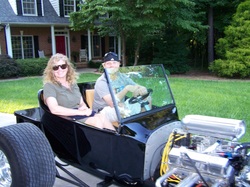 Even though we showed up on their driveway without warning with our big rig (Thanks Steve! Thanks Turi!) the Shaws were gracious hosts. Steve fired up his 1934 Ford hot-rod and reminded me about the uncomplicated joy engendered by acceleration and unfettered engine noise. We burned us some rubber. Locals in Mooresville point out the (large and lavish) houses of residents named Earnhardt, and Busch, and Andretti. Plus, for aspiring team-members there's a NASCAR technical school in town. The Flying Scot banquet was held at the Memory Lane Motorsports Museum, a warehouse stuffed full of antique cars, early race-cars, combustion ephemera, and some fairly eerie manikins. Click on the photos for a larger view. In the way photos often capture things you didn't see through the viewfinder, I notice upon closer examination that there's a NASCAR photobomber in one shot. The gonzo-green Bantam is being driven by the spaced-out spirt of Hunter S. Thompson. Multiple Richard Pettys (who somewhat resemble a certain skipper we know) seems to be encouraging everyone to take the low road. This was Mooresville, sorry to have it disappear in the back-up camera view.
The ten-hour drive home was -- no surprise -- wet and trafficky, but we made it back to our doorstep without incident, and that's a beautiful thing. 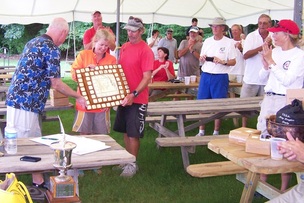 In which we sign for some silver. And do some cannonballs into the cool cool water. Three races in surprisingly fresh breeze (5 to maybe 10 knots), slung the Speckled Butterbean along smartly on the final day of the Flying Scot North American Championships. Beginning the day with a 4-point deficit behind Al Terhune, we didn't have high expectations. Nevertheless, the skipper sent us racketing up the left-hand side of the lake, trying to play connect-the-dots with bands of stronger pressure while most of our competition went right. At the first windward mark, we nipped in ahead of Team "Baby Daddy" Morgan, and then led for the rest of the three legs. By the downwind mark, Al rounded the right-hand mark, while we picked left, and the Butterbean took off some unfortunate scalded creature, galloping. At the downwind finish, we took first with Al just behind. Race #2 of the day went nearly the same way -- we found breeze and took an early lead and then held onto it with both hands while Al chomped on our heels. As they say in the craps table -- two points the hard way. 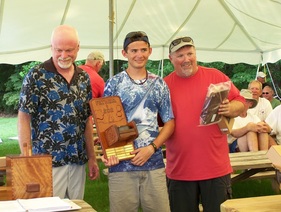 In Race #3, we saw Al heading for a pin-end start. It did not work out well for him. We started just to the right of him and our start wasn't fantastic, but we managed to wiggle across on port tack. Fellow Tampa sailor Mark Taylor was on our lee bow, plowing the way across the fleet and making us sweat to stay off his quarter. He finally shook us off about three-quarters of the way up. We rounded the top mark in around sixth place, and hung tough to gain a couple of boats somewhere. We were busy trying to keep track of Al -- even with half-a-dozen boats between us, he and his wife Katie are very fast and are not likely to roll over when the odds go against them. We ended the series with a 4th place -- we couldn't quite catch Rob Whittemore at the finish line -- while Al had a 12th, which put us at the top of the leader-board. Yay the Butterbean! The boats headed into shore, where unusually mild chaos reigned as 70 boats attempt to haul out, pack up, and put all their toys away. Celebratory cannonballs at the dock and general sharing of bevvies marked the end of racing.
The extensive loot-awarding ceremony went at a spanking rate (Yay Carol Claypool!), and most everyone hit the road by 5 pm on Friday. Outgoing class prez Diane Kampf and her husband Greg took top honors in the Challenger Division. The Tampa fleet took fleet honors (good thing, since we forgot to retrieve the Fleet trophy from Captain Andy's house. Oops!). Mark and Stew took took top Father-Son in 7th overall. Team Butterbean earned a major haul of loot, but false modesty dictates I should just shut up and close here. 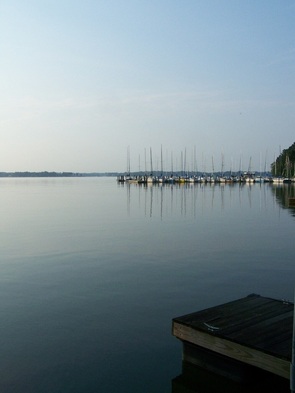 In which the wind stays home. With two races of the 2013 championship in the scorebooks, and one more needed to complete the minimum for the Flying Scot North American Championships, the race committee hung tough. Showing restraint and calm, the race committee postponed racing for a couple of hours on shore on Thursday morning. No one was very surprised by the flat conditions, so when the breeze did not appear by 11 am, the AP over A flags went up: Racing postponed until the following day. 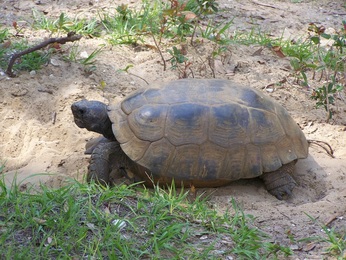 In which the racing starts. Again. For reals. The Flying Scot North American Championships -- the NACs -- truly really started on Wednesday. With measurement, Qualifying, and everything else done, the actual contest began with two solid races on Lake Norman. The NOAA weather forecast called it: early morning breeze of 5-7 knots predicted to die at around 1 pm. It bears repeating, if only for novelty value: the weather forecast was correct. Wow. The flotilla of mighty sailing vessels departed the harbor at around 8:30, in sunshine, but with some haze settling in. The breeze was out of around 040 degrees, and peaked at around 5 knots. We raced a #3 course (W/L/W/L finish to windward) first. To complete the sensory data: it was hot, and while the motorboat traffic was light, the powerboat wake chop was fierce, and some fish were belly-flopping from time to time. Discouraging words about the weather could be heard. The individual recall flag went up at the first start. From where we were -- pretty close to the line, about 10 boat-lengths from the boat -- it looked like perhaps three boats had started prematurely, but only one, Ryan Malmgren, got the hook. He didn't go back. On the first leg, conditions got soft, but the race committee hung tough. Whichever boats went right first jumped out, hitting the right-shore lift. We got hemmed in, and had to watch helplessly as others sped (okay, crawled tortuously, but still) into the distance. 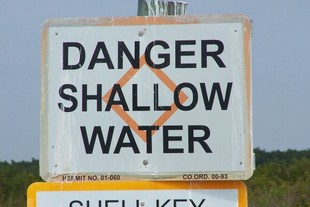 Team Terhune lead early by a long way. We wiggled our way through traffic, rounding in the top ten, and then doggedly worked to stay there while the wind touched down, went light, and firmed up again. Velocity was everything. As it often is while racing tortoises. It seemed miraculous that the wind did not fade completely, but the race committee proceeded with confidence, setting up another long #3 racecourse on the lake. Again, there were chargers ready to start extra early. Two were called over early, and while Ryan Malmgren went back, the other, the pretty blue local boat sailed by Liz Elden and Don Gray got an OCS. We started low of the main pack, a few boat-lengths up from the pin-end. In a stunning display of shear nerve, the skipper made it a one-tack beat. As less bold souls peeled off and returned to the race course, we made a bee-line for the left-hand shore. We sailed more or less right back to the yacht club, and tacked only when we reached the shoal. Lo and behold, we'd achieved the port lay-line. The rest of the fleet was mere confetti on the horizon. We pointed the Bean across the pond, and though we sailed back in a 20-degree knock, we ended up rounding the top mark in first. Velocity trumped angle. My nerves in shreds -- imagine the prolonged suspense of racing at these break-neck rates of, say, 1.34 knots for oh, 10 minutes in a straight line as the wind continues to play merry hell with one's hopes and dreams -- we turned the corner and promptly missed the pounce on young Greiner Hobbs. Downwind, we had to play catch-up, trying to sniff out fresh lanes of breeze to round just behind Greiner, cutting off Team Terhune and Rob Whittemore and John Wake as we headed for the right-hand shore. Showing excellent judgement, the race committee shortened the race at the weather mark, and we finished second, retracing our way back to the club before the wind died completely. Results here. There was time for some adult slushie bevvies (Thanks Team Terhune!) and some water-buffaloing (standing in the water, drinking) and plenty of retelling of the day's adventures before a tremendous thunderstorm rolled across the lake and sent us to our scattered vehicles, tents, houses.
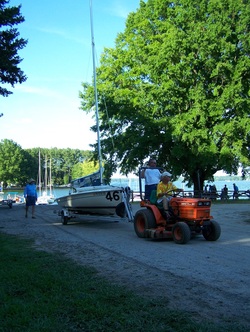 In which Lake Norman nearly foils us all. The Flying Scot NACs begins with a qualifying series that's meant to sort the fleet into two halves. The entire gang of registered boats split into four groups, which race against each other in a three-race series. The top half goes on to race in the Championship Division while the second half becomes the Challenger Division. The first day of Qualifying dawned bright and -- not so windy. Having anticipated less-than-ideal conditions, the race committee scheduled racing to start at 9:30 all week. With 68 boats on shore waiting to launch, it meant that we needed to be up, packed, and ready to push off the dock at 7:30 am. 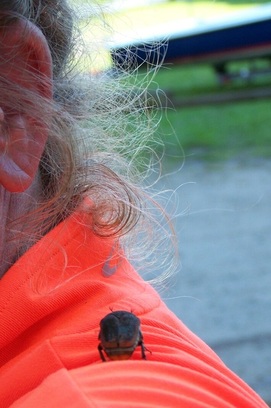 The racing, however, didn't end up starting until after lunch. Though we sailed out and back to the racing area early in the morning, the breeze did not hold and the postponement flag never came down on shore until 3 pm or so. While waiting, we played some half-hearted bean-bag toss matches. We made plans involving blenders, various bottled concoctions, and copious quantities of ice. We observed the local wildlife. Bluebirds flitted thorough the jack-pines. Brim and bass splashed. The junebugs here in Lake Norman resemble chunks of emerald and gold dichroic glass. Here's a selfie with junebug. They fly like Japanese zeros: straight out of the sun they come, buzzing like lawnmowers, kamikaze-ing people, boats, tents, making contact with a sound as loud as a cork popping from a bottle. Once the breeze picked up -- and it seemed so unlikely that it would not fade again -- the fleet surged to the middle of the lake and raced a "course 3" -- the longest of the course options. And it seemed like the least sensible racecourse given that the breeze was going to die. So much for doubting: the breeze stayed up around 4 knots (it seemed like a gale!), with the odd puff to maybe 8 knots (full-on hiking on the Speckled Butterbean). We had a good start toward the pin-end. Alas, while we had a good compass heading, the boat-end had a lot more wind pressure, which made the first upwind leg a battle. A couple of dozen boats were sailing between us and the front of the pack. As the skipper says, "It was looking pretty hurtful there for a while." But we made like honey badgers and kept the Bean rolling. We connected a few puffs, did not take transoms, and fought our way to the top ten. Downwind, we caught Larry Taggert, and then were the first boat to tack to the right side of the course. After ten minutes or so, we looked around to find that yes, the right paid big dividends. We led at the third mark. Downwind, after rounding the right gate, we probably should have gone immediately to the right side of the course, because Texans Heidi and Kelly Gough went up the right side and got the cross on us. We threw a handful of tacks in -- more for practice than ambition -- and finished second. We got back to shore, hoisted the boat, helped our friends get their boats out of the water, and lo -- it was 7 pm. A full 12-hour shift of sailing. Or a 12-hour shift of something.
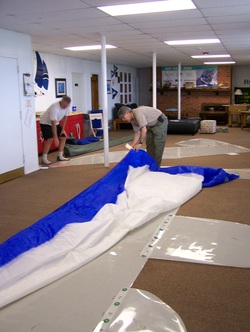 In which the boat measures in and I check out. A long day at Lake Norman YC: the Flying Scot NACs begin with measurement each year. To be sure that this one-design class is a solid single design, there's a fairly vigorous measurement process. It starts with a random-draw component: If you draw a blue gumball, you have your spinnaker, mast and boat measured. Yellow gumball equals jib, boat-weight, and centerboard. Green means main and rudder. If the boat has finished in the top five in the past five years, all of the above. Since she became ours AFTER last year's NACs, The Speckled Butterbean drew blue. Lake Norman YC, being a rather roomy hunk of lakefront, spread the measurement out over the expanse of acreage. If you form a reversed C with your right hand, the registration and sail-measurement happens at your first index knuckle. Safety and rudder measurement is at the web of your thumb. Centerboard and weighing occurs at the base of your thumb-nail. Bringing bicycles might have been our smartest tactical decision of the event. It's a solid ten-minute walk from index knuckle to thumb-nail -- and a three-minute bicycle ride with the breeze in your face. It was a group effort to get the gang measured, but we are mostly done. One or two teams (Hello Morgans!) hadn't arrived by the end of the day Saturday, and some necessary pieces (a sail, a centerboard) were still en route for some. Rumor has it there was a field-trip to find oysters in the evening, but alas, I was felled early by migraine. |
About the Blog
A lot of ground gets covered on this blog -- from sailboat racing to book suggestions to plain old piffle. FollowTrying to keep track? Follow me on Facebook or Twitter or if you use an aggregator, click the RSS option below.
Old school? Sign up for the newsletter and I'll shoot you a short e-mail when there's something new.
Archives
June 2024
Categories
All
|
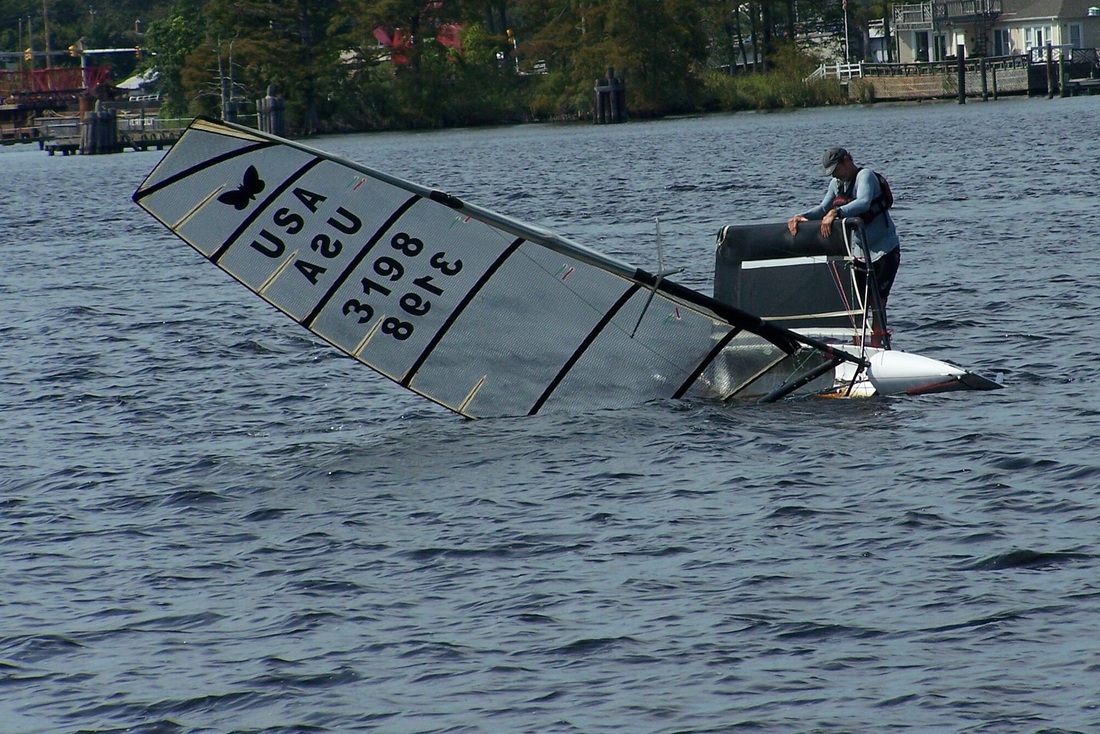
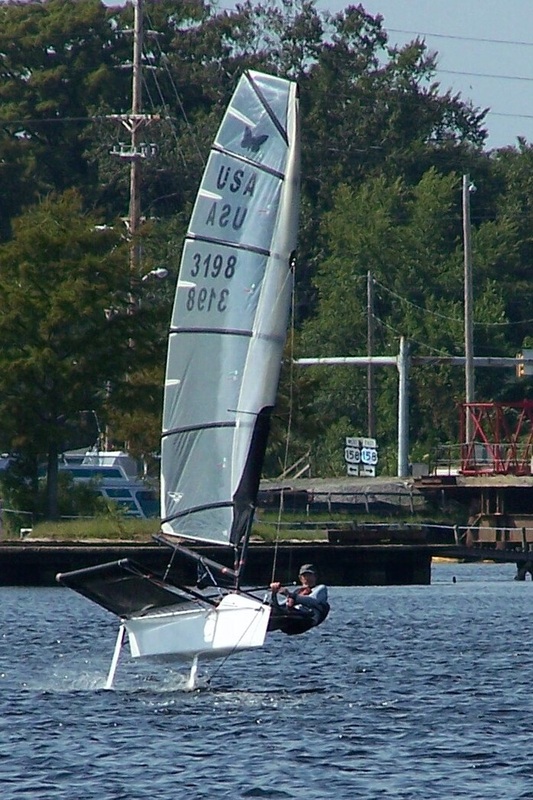
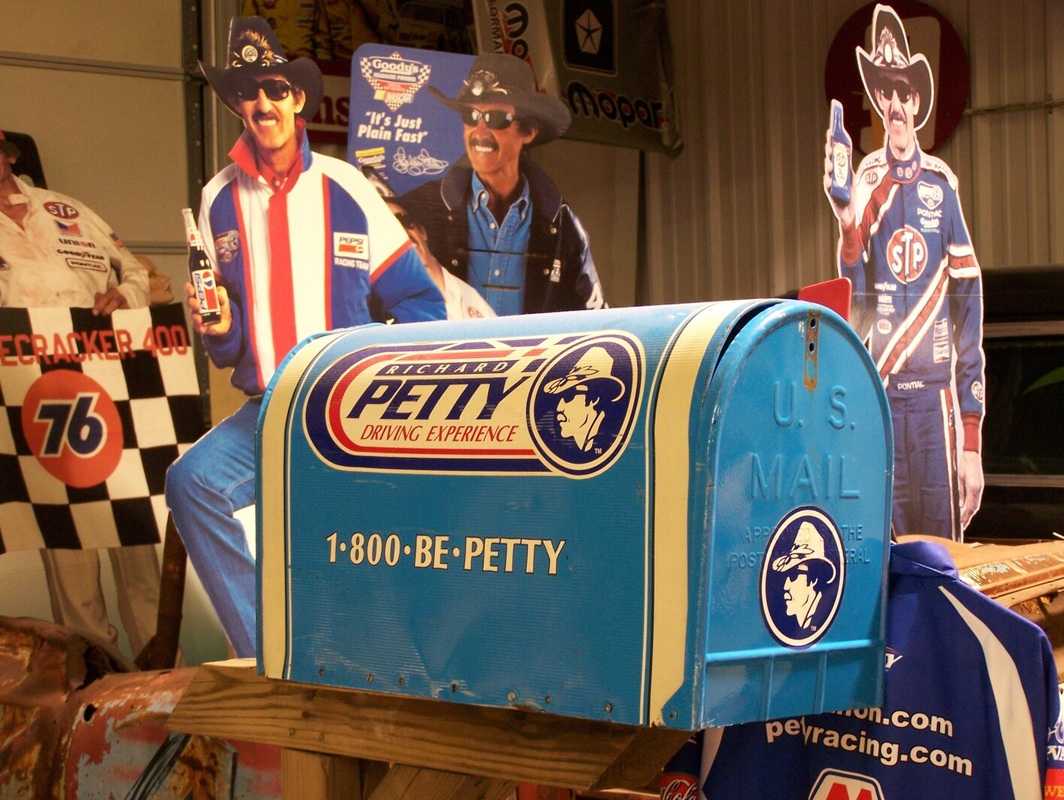
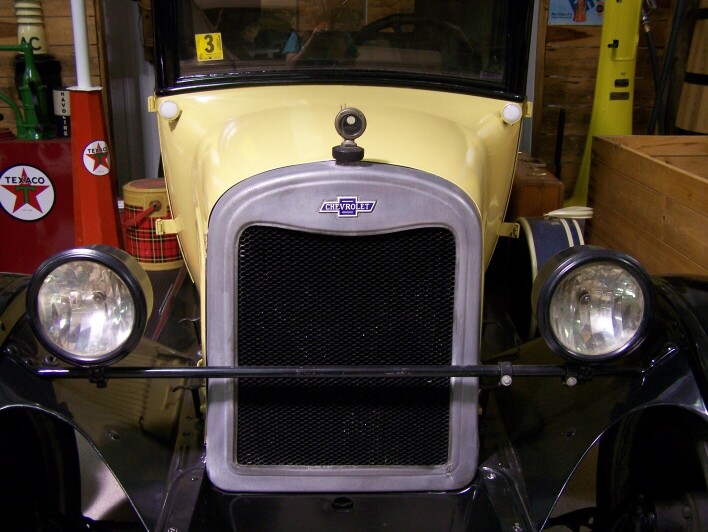
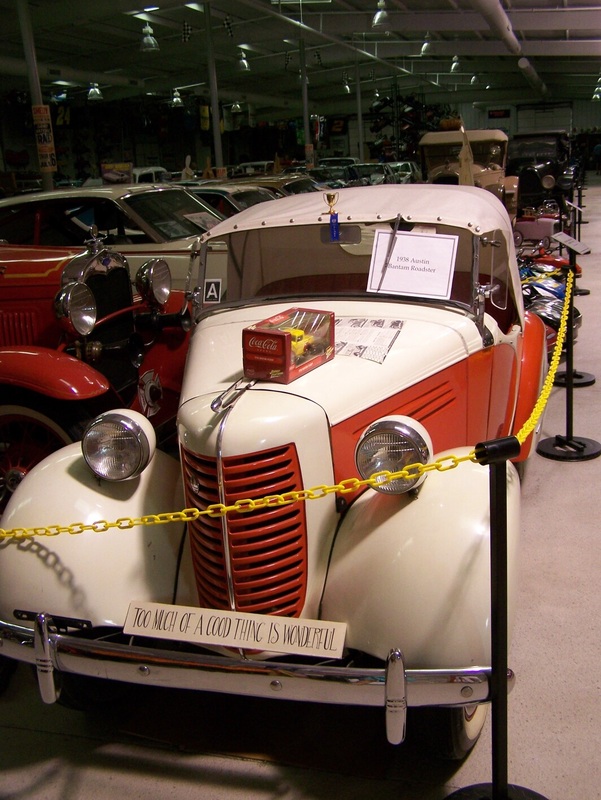
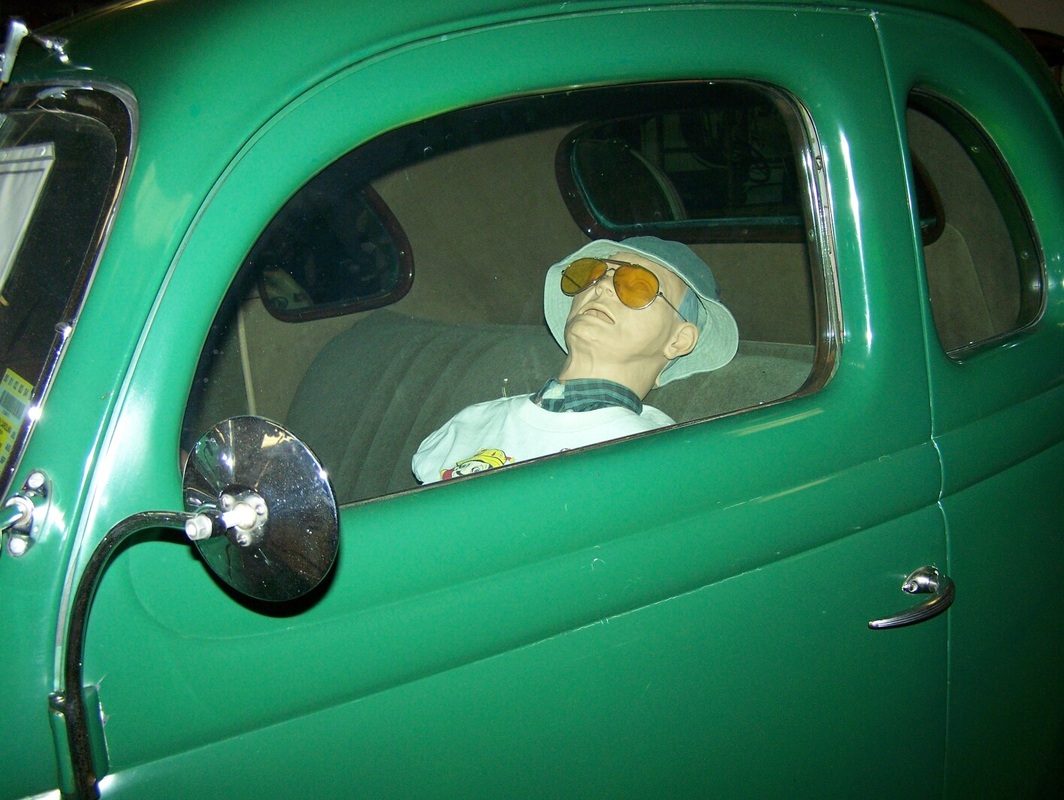
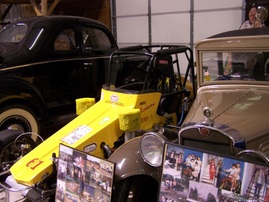
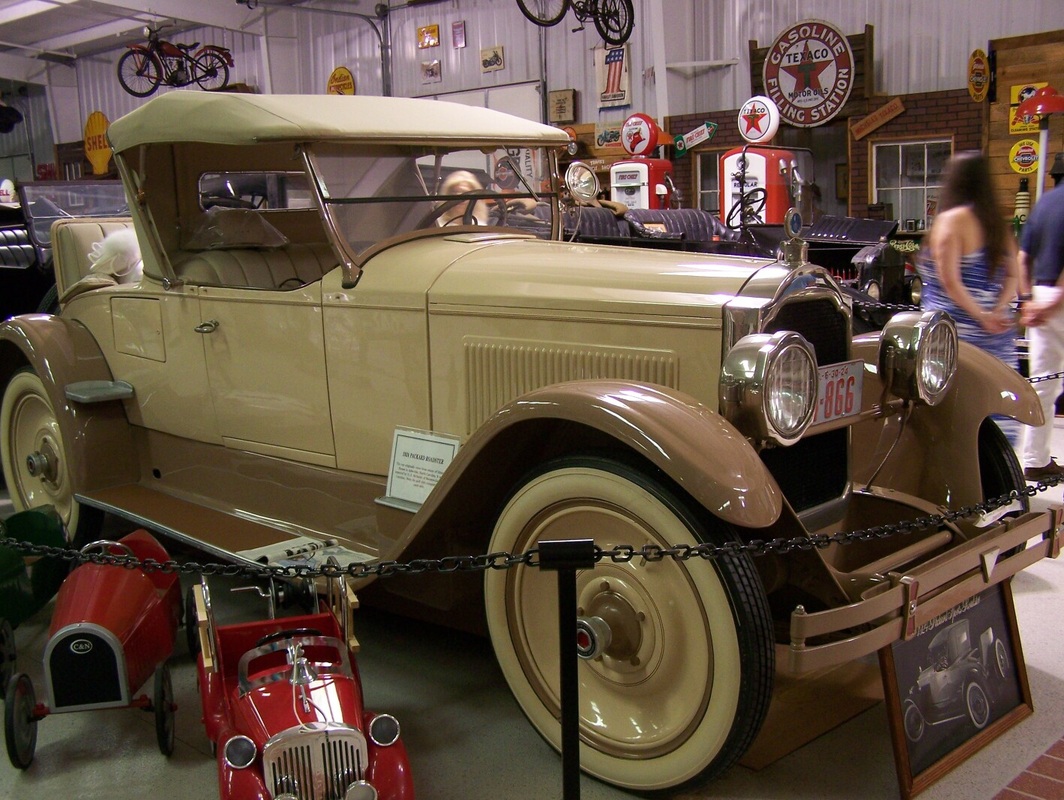
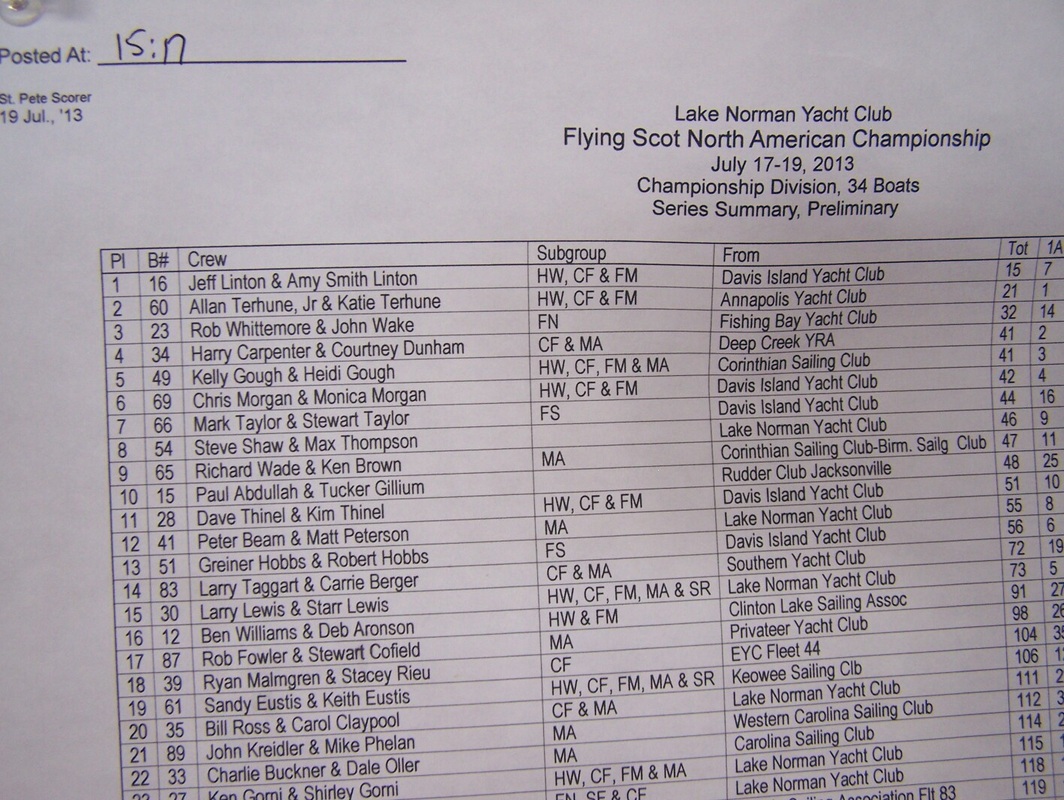
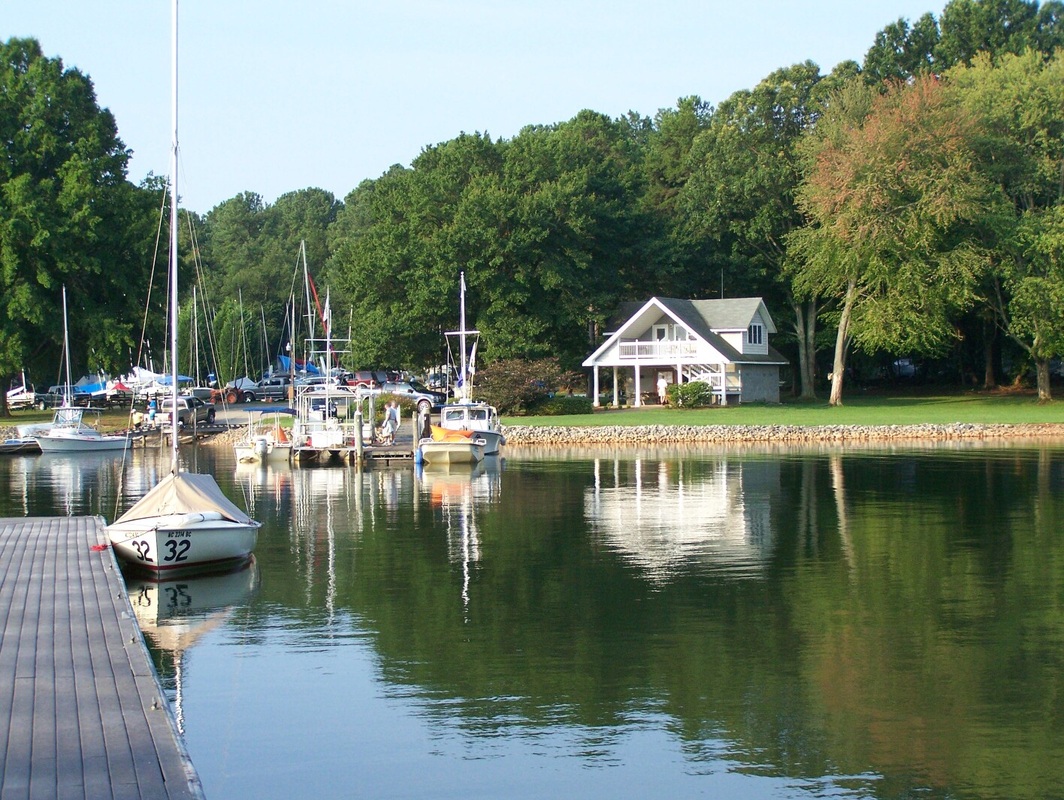
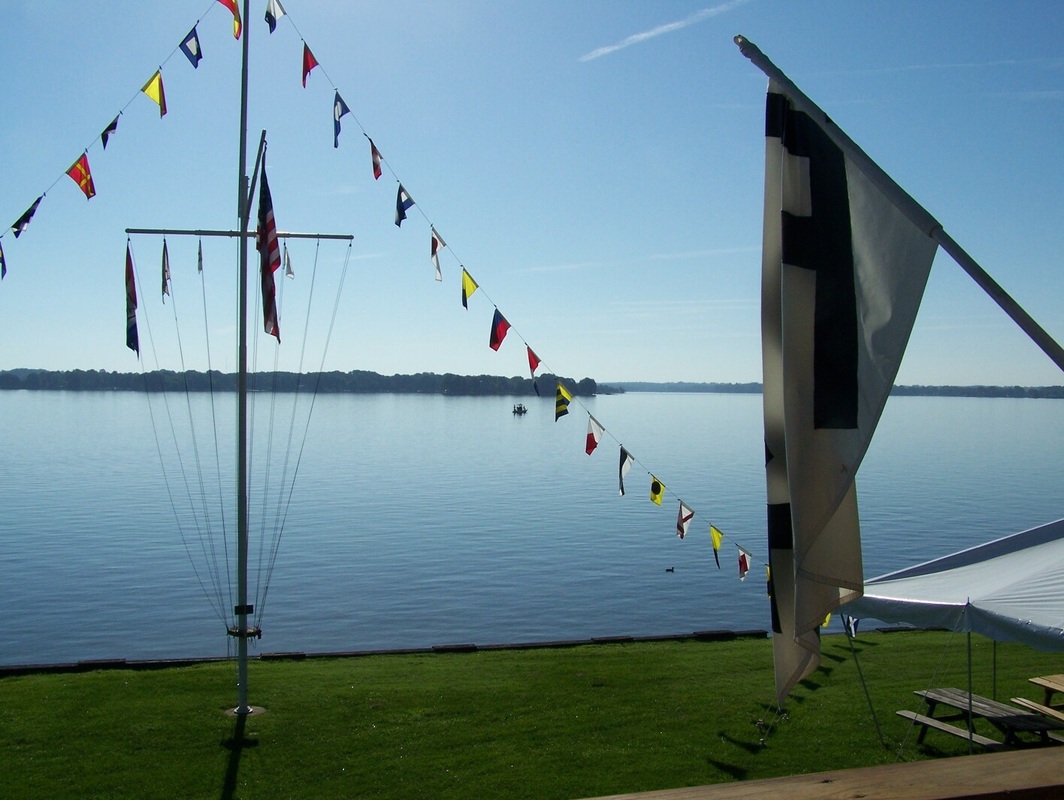
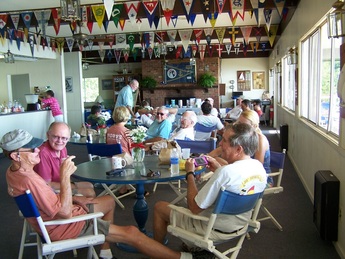
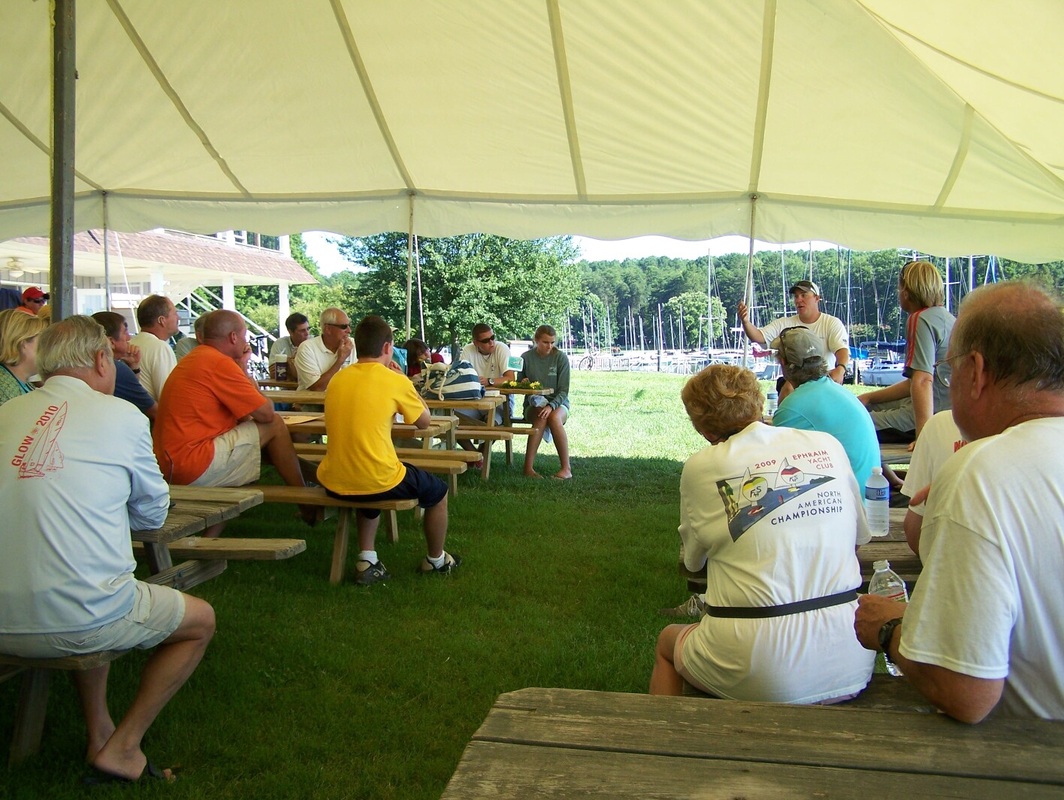
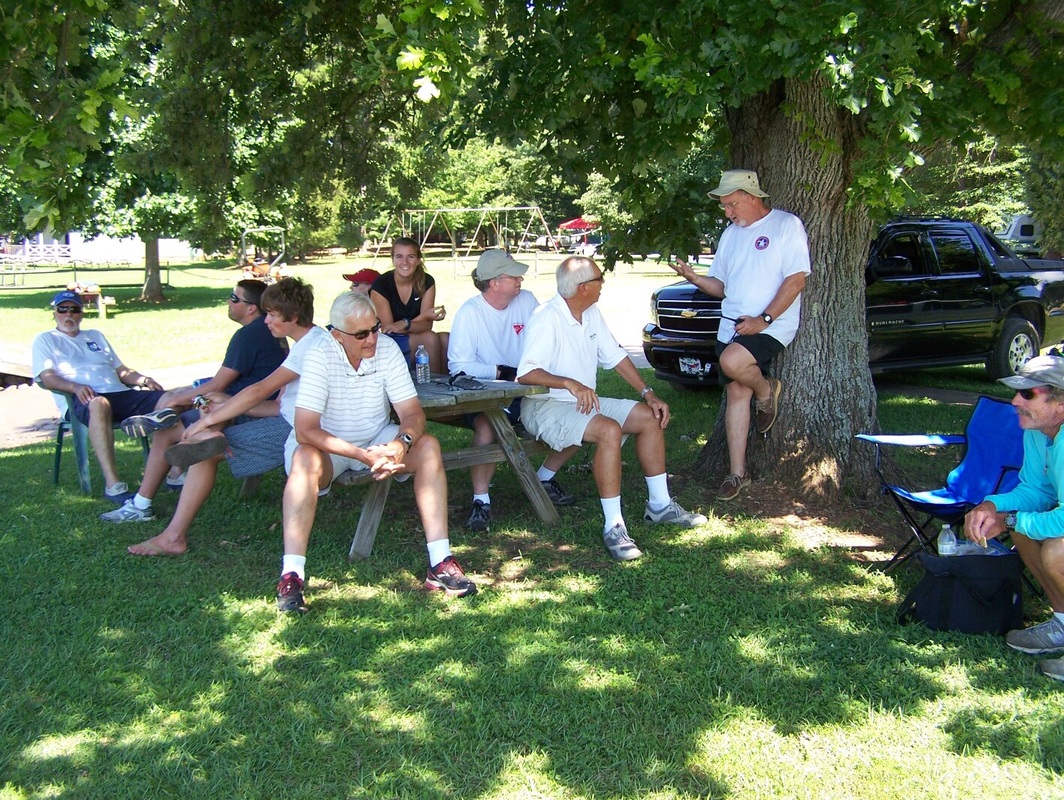
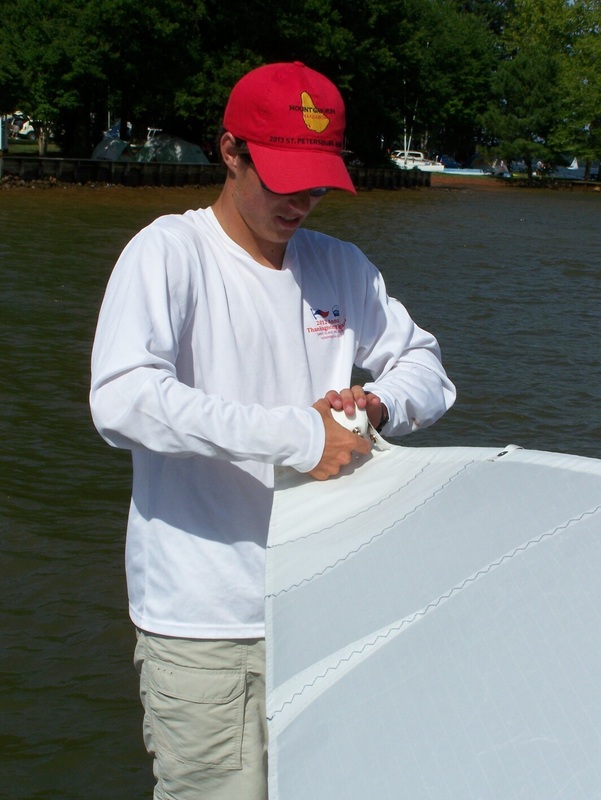
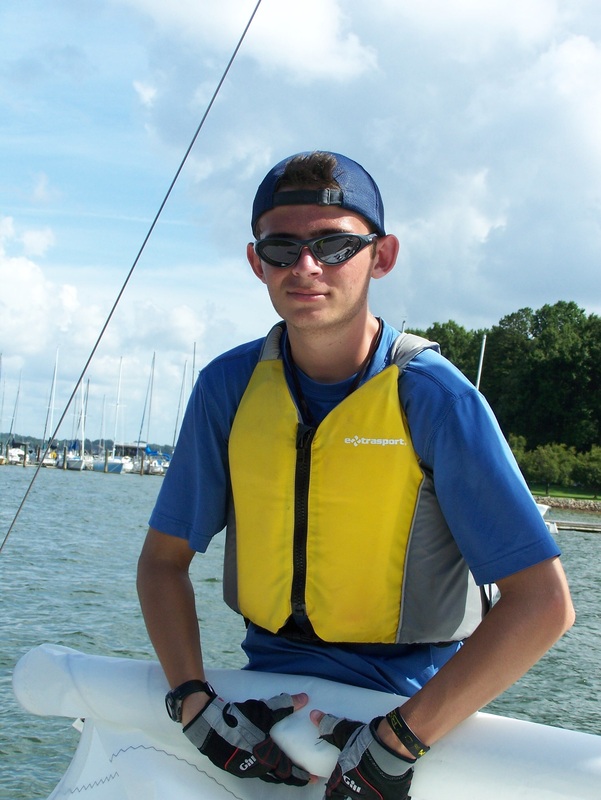
 RSS Feed
RSS Feed
